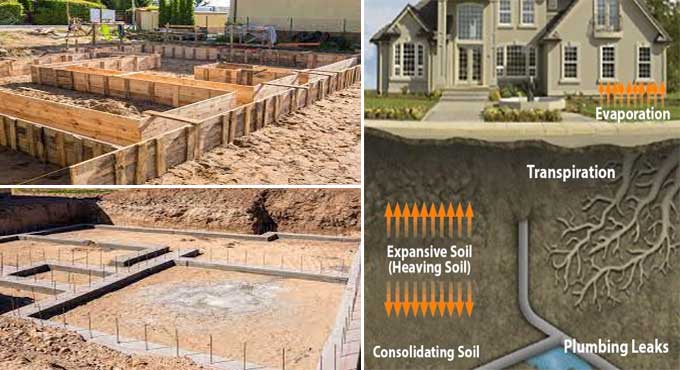
Understanding Clay Soil and its Merits & Disadvantages
Clay soils consist of millions of particles with a radius of .001 millimeters. Clay soils are notorious for having poor water and air movement due to the close spacing of the particles in the soil. Clay particles are found in excess of 25 percent of this soil, which makes the soil clayey, and it retains a high amount of water due to the spaces between clay particles.
Its superfine mineral particles and small amounts of organic matter make clay soil nutrient dense. Since clay soil contains excellent clay particles, it maintains a high water holding capacity. There is very little air in clay soil types that are wet because the particles are smaller than .2 mm. Wet clay type soils are sticky and possess very little air.
Clay Soil Enhancement
The progress of clay soil takes time and effort, but the main point is that your efforts immediately enhance the structure of your existing soil and make it a lot easier to work with.
- If you excavate a planting hole in clay soil, it is easier to enhance a whole planting area rather than try to enhance individual planting holes. It is necessary to provide 6 to 8 inches of organic matter to the whole bed in order to advance the soil.
- The organic matter can also be delivered according to the requirements. All of these are excellent options, including grass clippings, shredded leaves, compost, rotted manure, and compost.
- Once the organic matter has been distributed on the soil, you need to combine it into the top 6 to 12 inches of soil by hand. During the excavating and mixing process, a shovel can be very useful because it allows you to move a lot of soil and earth without squashing it.
- Upon completion of the work, the garden bed will be a few inches higher than it was previously. However, this is not a major issue since the organic matter will break down throughout the season.
- Once the organic matter has been broken down by microorganisms, the structure of clay soil will continue to improve. This process can be continued so as to improve the soil structure and offset any setting that occurs by providing more organic matter in the form of compost once or twice a year.
- You bought land with imperfect soil when you purchased it. Clay soil advancement was required at that time.
Clay Soil Applications
Ceramic Production
Due to its elastic nature, clay can be easily molded into various shapes and structures when water is reacted with it. After adding water to clay soil, malleable material is created. This is why clay soil is utilized by ceramicists for ceramics. Furthermore, clay soil can be utilized to prepare ceramic tiles, as well as for floors, walls, and counters.
Medical
Folk medicine is prepared from clay soil. There is evidence that the mineral content of clay soil reduces wound infections and upset stomachs. Clay soil contains minerals that have antimicrobial properties that are effective at killing pathogenic bacteria that are resistant to antibiotics.
Construction
Due to clay soil's special properties, it has been used for construction since ancient times. Clay soil can be turned into bricks by either burning or sun drying. Clay cobs and adobe are also made from clay by mixing it with straw and sand. They are very durable, affordable, bearable, and can last for hundreds of years.
Pottery
Pottery has been prepared from clay soil since ancient times. It is dark colored clay that is blended with water, forming a thick mass type of material, which is then shaped into various shapes. Clay molded structures are kept inside an oven where they are purged of all moisture so they become hard.
Merits of Clay Soil
High Density of Nutrient
A clay soil particle attracts and attaches to nutrients such as magnesium, potassium, and calcium, which provide food and promote plant growth.
High Drought Tolerance
There can be so much moisture in clay soil that it is drought tolerant. During the dry season or drought situations, your plants will have enough water to draw from when there is an abundant amount of clay in your soil.
Suitable for right type of plant
Despite its high moisture content and availability of nutrients, moist clay soils are not suitable for many plants, but only for some kinds.
To get more details, watch the following video tutorial.
Video Source: Green's Lawncare & Property Services
Demerits of Clay Soil
- The compaction of dry clay prevents plants from absorbing water and creates sticky surfaces, preventing trees from growing effectively.
- In dense clay soil, particles are closely packed together, preventing enough air from getting to the roots of plants.
- Soils with clay still contain water, and clays that do not drain water properly lead to rotten roots.

Wrapping it Up
There are several plants that do well with clay soil, but many others do not as well as pots, toys, and other products that have been made with clay soil. The type of soil you have may have clay if, whenever water is observed, it puddles instead of sinking.
A soil test can determine whether or not your soil is clay soil if it contains over fifty percent clay particles. There is a high likelihood that you will know if you own clay soil or not. During dry weather, soil sticks to garden equipment and forms big clods that are difficult to remove, and also sticks to shoes that cannot easily be removed.

